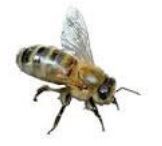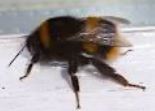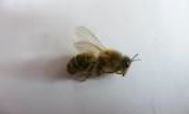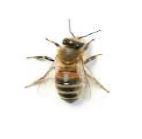What are they?

Bees are the main pollinators of many of our wildflowers, crop and vegetation. Without them these plants would struggle to reproduce and could result in other species being able to dominate our landscape. The countryside could lose its colour and many rare plants may disappear.
Bee numbers are dropping all the time and since 1950s the population of some species have halved.
Therefore Bassetlaw District Council promotes the safeguarding and protecting of all bees. We will never undertake a treatment unless the bees are a direct threat to human health.
Bumble Bees

Bumble bees are non-aggressive and social insects. They are a large, hairy, black and yellow bee with a bumbling clumsy flight.
Bumble bees rarely sting. They will only sting if they are handled roughly or feel threatened.
They never swarm or attack. They are more interested in going about their business pollinating the environment.
They usually die off by the end of September.
Bumble bees create nests which last one summer. The nests are a simple structure covered in moss and are usually located on the ground or under wood piles/sheds.
If you notice a bumble bee nest we recommend that you take no action as they are unlikely to cause you a problem. If nests are moved the bees often die and this should always be a last resort.
Masonry and Mining Bees

These bees are also a non-aggressive solitary bee. They are not a threat to human health as they do not sting (they do have a sting but it is unable to penetrate the skin).
Masonry and mining bees have a hairy body that appears brown and orange. Compared to a wasp they are fatter and do not have an elongated body.
Both species breed early and are active from March until the end of June. The bees will die off once egg laying is completed in June.
To lay their eggs the bees make small passages in soft mortar of walls or occupy existing holes. The holes are then sealed ready for the new bees to emerge the following year. Mining bees have similar practices but lay their eggs in soil (preferring sandy areas).
Honey Bees

Honey bees are hugely beneficial to the environment. Honey bees have dark brown and black stripes as opposed to wasps which are bright yellow and black.
If you see a large mass of bees hanging in a tree, hedge or post about the size of a football, this will be a swarm of honey bees. Swarms are caused when a group of worker bees leaves the colony to form a new colony with a queen. They will remain here temporarily (this could be a few days) until the scout bees return with a new location. However, if the swarm is still there after a week it is unlikely to move on.
Honey bees are usually non-aggressive only reacting if they believe the swarm is under threat. Bassetlaw District Council are committed to saving swarms and re-homing them in safe locations.
If you find a swarm do not panic! Contact the Environmental Health team for contact details of local beekeepers, who may collect the swarm or give you advice.
Bee and Wasp Stings
Advice about bee and wasp stings is available on the NHS website.
While it is quite rare, some people can have an immediate allergic reaction to being stung. This is known as anaphylactic shock, which can sometimes be fatal. In this instance dial 999 immediately for an ambulance.
Last Updated on Wednesday, May 8, 2024